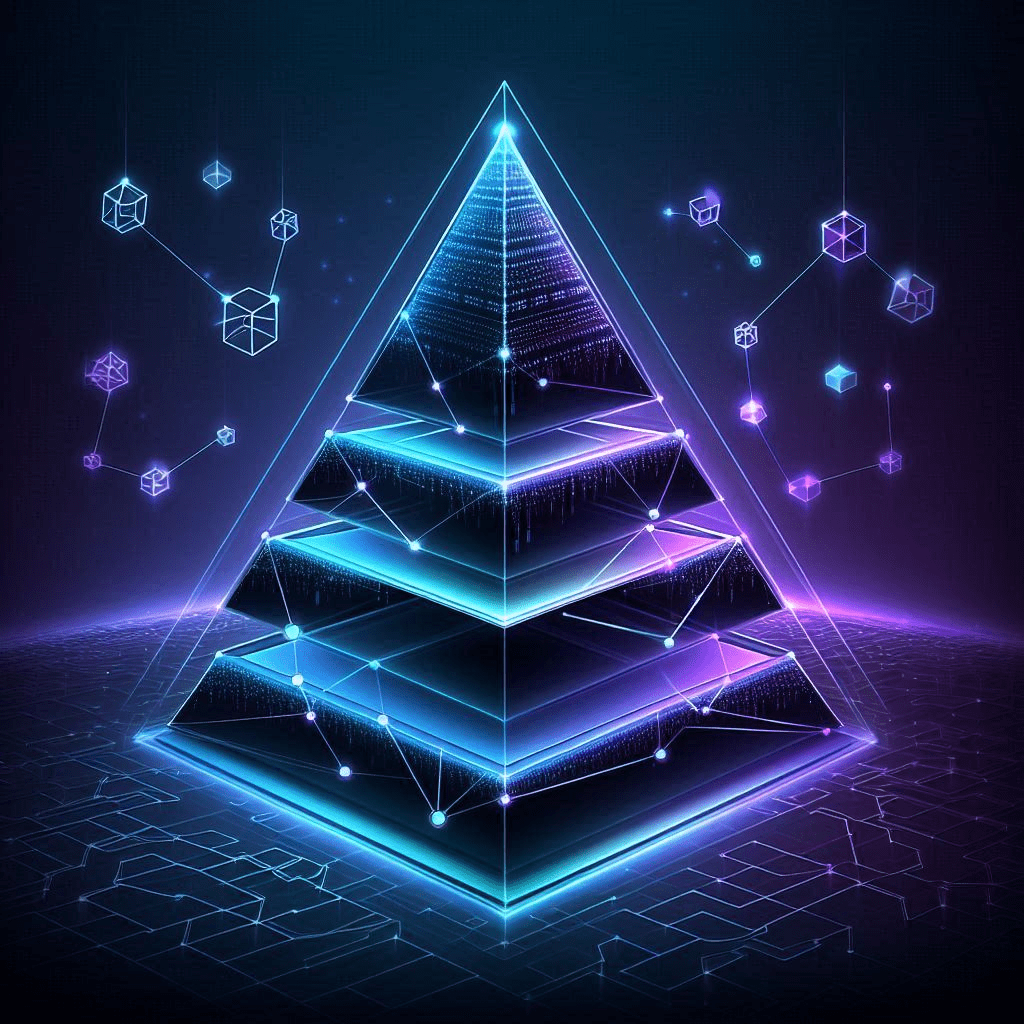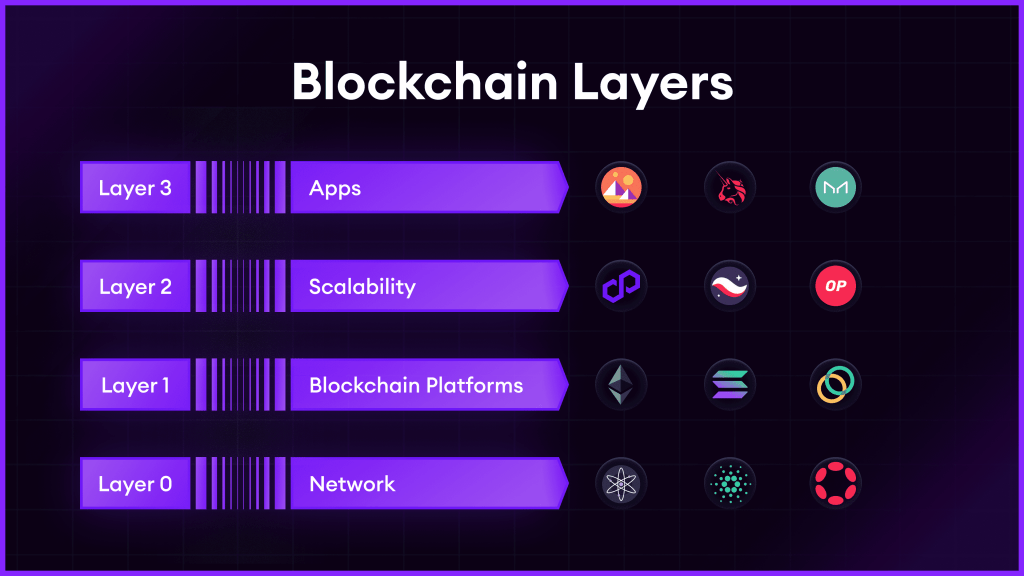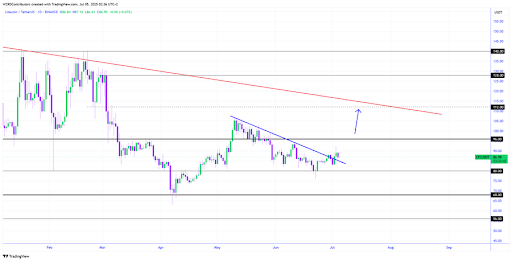
Understanding Layer-3 Blockchains: The Future of Scalable and Interoperable DApps
The Layer-3 blockchains are built as a layer of blockchain technology on top of the foundation layers to create application-specific blockchains that are more customised to users’ demands.
Building on the success of both layer-1 and layer-2 solutions, layer-3 blockchains represent a new generation in the evolution of blockchain through an advance in functionality for DApps. L3 blockchains seek to overcome the drawbacks of both L1s and L2s and accelerate blockchain technology adoption by offering consumers a more adaptive, efficient, and user-friendly blockchain environment.
While Layer 2s usually try to scale a blockchain network, Layer 3s are generally focused on the bridging of different blockchains and on the smooth connection of those chains to one another. Layer 3s are envisioned to provide more holistic answers to scalability, performance, interoperability, customizable functionality, security, and cost.
Key highlights of L3 blockchain technology are increased transaction throughput, cross-chain communication protocols, and smart contract functionality that enable complex DApps and network interactions. Besides this, many layer-3 blockchains possess very sophisticated governance systems that allow for effective decision-making and development of a protocol.

The Difference Between Layers 1, 2, and 3?
If we were to consider Blockchain from an architectural point of view, then L1 would be the basic design, L2 would add the functionality, and L3 would power applications built on top of it.
Each has a different consensus-making process, scalability options, transaction speed, and amount of security.
Layer-1: Base Layer
The layer-1 blockchain refers to the blockchains where the blocks get added, and the transactions are completed in order to create a safe base for the blockchain network. On the issue of validation of a transaction, these decentralized networks usually rely on such consensus techniques as PoS or proof-of-work. Blockchains operating at Layer-1 are isolated from other networks.
High transaction volumes tend to break the bank of the capacities that L1s boast of for security and transaction validation. Even L1 blockchains are not an exception but are also subject to the blockchain trilemma: every blockchain makes its trade-offs between blockchain scalability, decentralization, and security for optimal performance and functionality. To offset this weakness, a second layer has been conceptualized: Layer 2.
Layer-2: Secondary Protocol
Layer-2 blockchain solutions refer to additional protocols added to increase the base layer functionalities without being standalone blockchains, built on top of layer 1 blockchains. These L2 solutions were supposed to fix the scalability problems of layer-1 blockchains and involve a variety of second-layer scaling solutions such as sidechains, rollups, and state channels.
Layer 2s reduces costs and speeds up transactions without sacrificing security by using off-chain computing and occasionally settling the transactions on the main chain. However, even though L2s greatly increase scalability, problems with blockchain compatibility and customization may prevent them from being fully utilized.
Layer 3: The Application Layer
Blockchains with layer-3 functionality operate as an application layer by utilizing base layer features. They allow for increased transaction throughput and customized applications by improving scalability beyond L2s. Through scalability and a combination of layered consensus algorithms, including proof-of-authority and proof-of-state, Layer 3s provide network performance, decentralization, and security while fostering efficient and economical financial transactions.
Facilitating smooth communication and interoperability across different blockchain networks without the need for middlemen is what makes L3 unique. Layer 3s open doors in asset tokenization, cross-border payments, and decentralized finance (DeFi) with their sophisticated protocols and cross-chain bridges.
Layer 3 takes medium decentralization from Layer 2 and prioritizes inter-blockchain communication through interoperability protocols, whereas Layer 1 has the most decentralized design.
| Layer 1 | Layer 2 | Layer 3 | |
| Primary Function | Core Blockchain Protocol | Scalability | Customization and Interoperability |
| Scalability | Limited | Improved | Potentially high |
| Interoperability | Low | Limited | High |
| Security | High | Layer 1 Security | Underlying Layers Security |
| Decentralization | High | Moderate | Moderate |
| Customization | Generic Functionalities | Limited Options | High |
How Layer-3 Blockchains Operate
To achieve scalability and interoperability for decentralized applications, layer-3 blockchains make use of off-chain processing and innovative consensus techniques.
Layer-3 blockchains incorporate more advanced smart contract features while utilizing the security and transactional capabilities of L1s and L2s. Layer 3s were able to carry out intricate off-chain computing and settlement while preserving the high performance and security of the underlying blockchain thanks to layer-2 scaling solutions like state channels and sidechains.
By facilitating communication between various blockchains via protocols like inter-blockchain communication (IBC), Layer 3s improve interoperability. Additionally, this enables seamless communication between various DApps, such as DeFi and the nonfungible tokens (NFTs) created on various blockchains.
Smart contracts are deployed into virtual machine environments, which are customized L3 architectures that serve as the foundation for the execution of several DApps. Because these settings let the blockchain to run any code, developers are able to build DApps with sophisticated features.
Scalability is addressed with Validium, a layer-3 blockchain component, which uses zero-knowledge proofs to validate transactions off-chain. Although it enables L3 blockchains to reduce costs and speeds up transaction times, data security is dependent on validators. Validium doesn’t offer the same level of security as layer 1s, but it is a solution for applications that need to operate quickly and efficiently.
Another essential part of layer 3s are rollups, which combine several transactions into a single compressed data structure to maximize transaction performance. Through off-chain batching and frequent layer 1 commits, rollups increase scalability without compromising security.
Delegated proof-of-stake and PoS are two examples of novel consensus techniques that are commonly used in Layer-3 protocols. The capabilities of layer-3 blockchains are increased by these consensus algorithms, which also maintain the system’s decentralization and security while increasing the network’s scalability and energy efficiency.

Layer-3 Blockchain Use Cases
Layer-3 blockchains provide a wide range of applications with several use cases that may be applied in different sectors.
Applications for Gaming
Gaming apps can handle a lot of transactions per second when they run on layer 3, which gives consumers a smooth experience. Because there are fewer transaction fees, this lowers expenses for both users and developers. This is particularly significant for gaming applications that need frequent transactions.
DeFi Programs
Layer-3 solutions that create interoperable platforms that link different DeFi protocols can boost liquidity and spur innovation. Through the facilitation of direct asset transfers across blockchains, they promote decentralization, security, and liquidity in the financial industry. This novel protocol can reduce counterparty risk in the DeFi industry by increasing liquidity pools and optimizing cross-chain transactions.
Applications for supply chains
By enabling cross-chain data exchange and verification, L3 systems may aid in supply chain tracing, increasing product provenance, lowering fraud, and boosting customer confidence.
Business Software
Enterprise blockchains benefit from layer-3 protocols’ scalability and efficient transaction processing even while they are controlled by centralized entities. Blockchains are an excellent match for many corporate applications because they can be used to achieve the objective of low-cost and high-volume transactions.
Development of DApps
Using a layer-3 solution, developers may construct decentralized apps that work with several blockchains. Compared to their single-chain equivalents, multichain DApps can offer more sophisticated functionality, scalability, and user experience.
NFT Software
Through layer 3’s assistance, multichain cross-chain NFT markets can open up new options for digital art and gaming assets by enabling users to exchange NFTs across different blockchains.
Apps that are Secure
Layer-3 blockchains in DeFi reduce attack surfaces, provide granular access control, and streamline fraud detection for improved security by establishing a safe and uniform identification layer across many blockchains.
The Success of Layer-3 Blockchains and Upcoming Obstacles
The difficulties increase in tandem with the growing use of cutting-edge technologies. The seamless integration and compatibility with the current layered blockchain architecture is one of the largest obstacles. Adoption and innovation will be greatly influenced by the collaborative efforts to develop common standards and interoperability solutions.
Developing and managing layer-3 infrastructure is not the only problem; maintaining security and decentralization as the system grows to handle more transactions and a larger user base presents additional challenges. Layer-3 solutions that strike a balance between decentralization and performance are necessary to maintain stability and longevity.
Adopting international laws pertaining to layer-3 blockchains may likewise provide challenges. Collaboration with regulators and stakeholders is important to create clear and adaptable frameworks that will serve as the foundation for compliance and innovation.
The resolution of the scalability and interoperability problems, as well as the technology’s capacity to transform several sectors and enhance decentralized ecosystems, will decide the success of layer 3s. It is essential to educate developers and consumers about the benefits and drawbacks of layer-3 technology in order to promote innovation and increase acceptance in DeFi and other areas.




